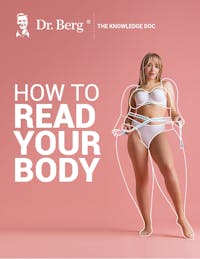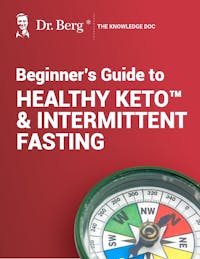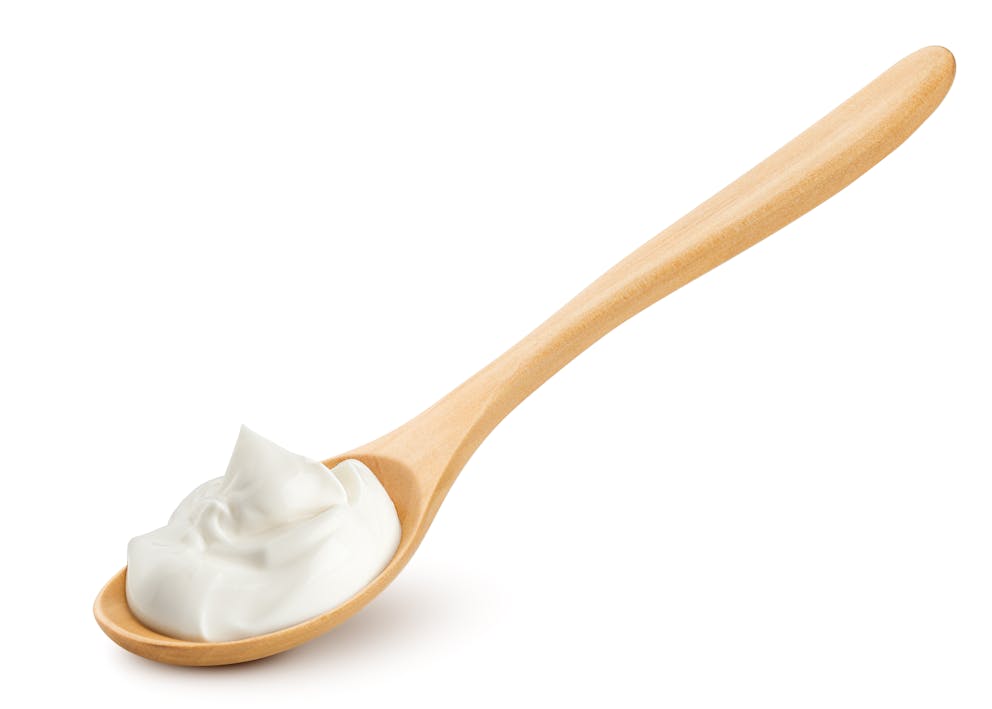High Cholesterol May Not Mean What You Think

How to Read Your Body
Learn to recognize common symptoms and uncover their underlying health issues
Understand the signs of nutrient deficiencies to manage your health
Explore the four metabolic body types and the core factors that influence them
Interpret your body's signals from head to toe to identify potential health concerns

How to Read Your Body
Learn to recognize common symptoms and uncover their underlying health issues
Understand the signs of nutrient deficiencies to manage your health
Explore the four metabolic body types and the core factors that influence them
Interpret your body's signals from head to toe to identify potential health concerns

How to Read Your Body
Learn to recognize common symptoms and uncover their underlying health issues
Understand the signs of nutrient deficiencies to manage your health
Explore the four metabolic body types and the core factors that influence them
Interpret your body's signals from head to toe to identify potential health concerns

How to Read Your Body
Learn to recognize common symptoms and uncover their underlying health issues
Understand the signs of nutrient deficiencies to manage your health
Explore the four metabolic body types and the core factors that influence them
Interpret your body's signals from head to toe to identify potential health concerns

How to Read Your Body
Learn to recognize common symptoms and uncover their underlying health issues
Understand the signs of nutrient deficiencies to manage your health
Explore the four metabolic body types and the core factors that influence them
Interpret your body's signals from head to toe to identify potential health concerns

How to Read Your Body
Learn to recognize common symptoms and uncover their underlying health issues
Understand the signs of nutrient deficiencies to manage your health
Explore the four metabolic body types and the core factors that influence them
Interpret your body's signals from head to toe to identify potential health concerns

How to Read Your Body
Learn to recognize common symptoms and uncover their underlying health issues
Understand the signs of nutrient deficiencies to manage your health
Explore the four metabolic body types and the core factors that influence them
Interpret your body's signals from head to toe to identify potential health concerns

How to Read Your Body
Learn to recognize common symptoms and uncover their underlying health issues
Understand the signs of nutrient deficiencies to manage your health
Explore the four metabolic body types and the core factors that influence them
Interpret your body's signals from head to toe to identify potential health concerns

How to Read Your Body
Learn to recognize common symptoms and uncover their underlying health issues
Understand the signs of nutrient deficiencies to manage your health
Explore the four metabolic body types and the core factors that influence them
Interpret your body's signals from head to toe to identify potential health concerns

How to Read Your Body
Learn to recognize common symptoms and uncover their underlying health issues
Understand the signs of nutrient deficiencies to manage your health
Explore the four metabolic body types and the core factors that influence them
Interpret your body's signals from head to toe to identify potential health concerns

Beginner’s Guide to Healthy Keto & Intermittent Fasting
Receive a step-by-step guide to starting Healthy Keto® and intermittent fasting
Learn about foundational principles and best practices for beginners
Get detailed visual guidance on portion sizes and meal composition
Discover how to set achievable goals and monitor your progress
Find practical tips for overcoming common challenges and staying motivated

Beginner’s Guide to Healthy Keto & Intermittent Fasting
Receive a step-by-step guide to starting Healthy Keto® and intermittent fasting
Learn about foundational principles and best practices for beginners
Get detailed visual guidance on portion sizes and meal composition
Discover how to set achievable goals and monitor your progress
Find practical tips for overcoming common challenges and staying motivated

Beginner’s Guide to Healthy Keto & Intermittent Fasting
Receive a step-by-step guide to starting Healthy Keto® and intermittent fasting
Learn about foundational principles and best practices for beginners
Get detailed visual guidance on portion sizes and meal composition
Discover how to set achievable goals and monitor your progress
Find practical tips for overcoming common challenges and staying motivated

Beginner’s Guide to Healthy Keto & Intermittent Fasting
Receive a step-by-step guide to starting Healthy Keto® and intermittent fasting
Learn about foundational principles and best practices for beginners
Get detailed visual guidance on portion sizes and meal composition
Discover how to set achievable goals and monitor your progress
Find practical tips for overcoming common challenges and staying motivated

Beginner’s Guide to Healthy Keto & Intermittent Fasting
Receive a step-by-step guide to starting Healthy Keto® and intermittent fasting
Learn about foundational principles and best practices for beginners
Get detailed visual guidance on portion sizes and meal composition
Discover how to set achievable goals and monitor your progress
Find practical tips for overcoming common challenges and staying motivated

Beginner’s Guide to Healthy Keto & Intermittent Fasting
Receive a step-by-step guide to starting Healthy Keto® and intermittent fasting
Learn about foundational principles and best practices for beginners
Get detailed visual guidance on portion sizes and meal composition
Discover how to set achievable goals and monitor your progress
Find practical tips for overcoming common challenges and staying motivated

Beginner’s Guide to Healthy Keto & Intermittent Fasting
Receive a step-by-step guide to starting Healthy Keto® and intermittent fasting
Learn about foundational principles and best practices for beginners
Get detailed visual guidance on portion sizes and meal composition
Discover how to set achievable goals and monitor your progress
Find practical tips for overcoming common challenges and staying motivated

Beginner’s Guide to Healthy Keto & Intermittent Fasting
Receive a step-by-step guide to starting Healthy Keto® and intermittent fasting
Learn about foundational principles and best practices for beginners
Get detailed visual guidance on portion sizes and meal composition
Discover how to set achievable goals and monitor your progress
Find practical tips for overcoming common challenges and staying motivated

Beginner’s Guide to Healthy Keto & Intermittent Fasting
Receive a step-by-step guide to starting Healthy Keto® and intermittent fasting
Learn about foundational principles and best practices for beginners
Get detailed visual guidance on portion sizes and meal composition
Discover how to set achievable goals and monitor your progress
Find practical tips for overcoming common challenges and staying motivated

Beginner’s Guide to Healthy Keto & Intermittent Fasting
Receive a step-by-step guide to starting Healthy Keto® and intermittent fasting
Learn about foundational principles and best practices for beginners
Get detailed visual guidance on portion sizes and meal composition
Discover how to set achievable goals and monitor your progress
Find practical tips for overcoming common challenges and staying motivated
I used to think cholesterol was the enemy. The big bad wolf of heart disease, lurking in every delicious bite of cheese and steak. But then I did some digging, and what I found out about cholesterol and heart health? It blew my mind.
Turns out, cholesterol isn't the villain it's been made out to be. In fact, our bodies need it to function properly. The real culprit behind heart disease? It's a lot more complex than just "high cholesterol."
So, let's set the record straight on cholesterol and heart health. I promise, by the end of this, you'll see cholesterol in a whole new light. And you'll be armed with the knowledge you need to keep your heart happy and healthy for years to come.
The Essential Role of Cholesterol in the Body
Cholesterol often gets a bad rap, but it's actually essential for our bodies to function correctly. This waxy substance is found in every cell membrane and is vital in hormone production, bile production, and vitamin D synthesis.
The body produces about 75% of the cholesterol it needs, while the remaining 25% comes from our diet. So even if you never ate foods containing cholesterol, your body would still make enough to survive.
Cholesterol's Contribution to Hormone Production
Cholesterol is a building block for steroid hormones like estrogen, testosterone, and cortisol. These hormones regulate everything from metabolism and stress response to sexual function and bone health.
Without enough cholesterol, our bodies wouldn't be able to produce these critical hormones in the right amounts. This can lead to hormonal imbalances and related health issues.
The Importance of Cholesterol in Cell Membranes
Cholesterol is a key component of cell membranes, helping to maintain their integrity and fluidity. It essentially acts as a gatekeeper, controlling what enters and exits the cell.
The right amount of cholesterol in cell membranes is crucial for proper cellular function. Too little can make membranes too fluid, while too much can make them too rigid.
Bile Production and Vitamin D Synthesis
Cholesterol is used to make bile, a greenish fluid produced by the liver that helps digest fats in the small intestine. Without enough bile, we wouldn't be able to properly absorb fat-soluble vitamins like A, D, E, and K.
Speaking of vitamin D, did you know that cholesterol is also necessary for its synthesis? When sunlight hits our skin, it converts a form of cholesterol into vitamin D3, which is then activated by the liver and kidneys.

Understanding Cholesterol Levels and Their Impact on Heart Health
While cholesterol is essential for health, too much of certain types can increase your risk of heart disease. That's why it's important to understand the different components of your cholesterol levels and what they mean for your heart health.
A standard lipid panel measures your total cholesterol, LDL (bad) cholesterol, HDL (good) cholesterol, and triglycerides. Here's a breakdown of each:
The Lowdown on LDL Cholesterol
LDL cholesterol is often called "bad" cholesterol because it can build up in your arteries, forming plaques that narrow and harden them. This process, known as atherosclerosis, can lead to heart attack and stroke.
Ideally, your LDL cholesterol should be below 100 mg/dL. Levels above 160 mg/dL are considered high and may require treatment with lifestyle changes and/or medication.
The Protective Role of HDL Cholesterol
HDL cholesterol is considered "good" because it helps remove LDL cholesterol from your arteries and transport it back to the liver for elimination. Think of it like a garbage truck that cleans up the streets.
Higher levels of HDL cholesterol are associated with a lower risk of heart disease. Aim for an HDL level above 50 mg/dL. Levels below 40 mg/dL for men and 50 mg/dL for women are considered low.
Triglycerides and Heart Health
Triglycerides are another type of fat in your blood that can contribute to heart disease when levels are high. They often go hand-in-hand with low HDL cholesterol and other risk factors like obesity and diabetes.
Your triglyceride level should ideally be below 100 mg/dL. Levels above 200 mg/dL are considered high and may need to be addressed with diet, exercise, and sometimes medication.
It's important to remember that total cholesterol is a combination of your LDL, HDL, and triglyceride levels. A healthy total cholesterol level is generally below 200 mg/dL.

Cholesterol Clarity
Delve into the intricate relationship between cholesterol and heart disease, aiming to provide clarity amidst the confusion. This informative guide navigates the complexities of cholesterol, shedding light on its role in cardiovascular health.
Additionally, the paragraph explores the benefits of incorporating probiotic-rich dairy products like kefir vs yogurt into one's diet. While both kefir and yogurt offer probiotic benefits, they differ in terms of taste, texture, and bacterial strains.
By understanding these nuances, individuals can make informed dietary choices that support heart health while enjoying the delicious and nutritious benefits of probiotic-rich dairy options.
Conclusion
Understanding cholesterol and heart disease is like putting together a puzzle. At first, it seems daunting - all those pieces, scattered and confusing. But as you start to fit them together, the picture becomes clearer.
We've seen that cholesterol isn't inherently bad. It's a vital part of our bodies, essential for everything from hormone production to cell structure. The key is balance - not too much, not too little.
We've also learned that heart disease is a complex beast. Cholesterol is just one piece of the puzzle. Inflammation, diet, lifestyle - they all play a role. But the good news? You have the power to influence these factors.
So, take charge of your heart health. Eat a proper diet, move your body, manage stress. And most importantly, work with your doctor to create a right plan for you.
With the right knowledge and tools, you can keep your heart strong and healthy - no matter what your cholesterol numbers say.
Supporting Data
https://www.ncbi.nlm.nih.gov/pmc/articles/PMC5441126/
https://www.ahajournals.org/doi/10.1161/CIR.0000000000000743
Previous blog
Stop Carbohydrate Cravings Fast With 4 ThingsNext blog
7-Day Fast: Benefits, Safety, and How To
Popular
08/21/2024
55K views
02/23/2025
46.3K views
11/18/2024
277.5K views
03/18/2024
11/21/2022




